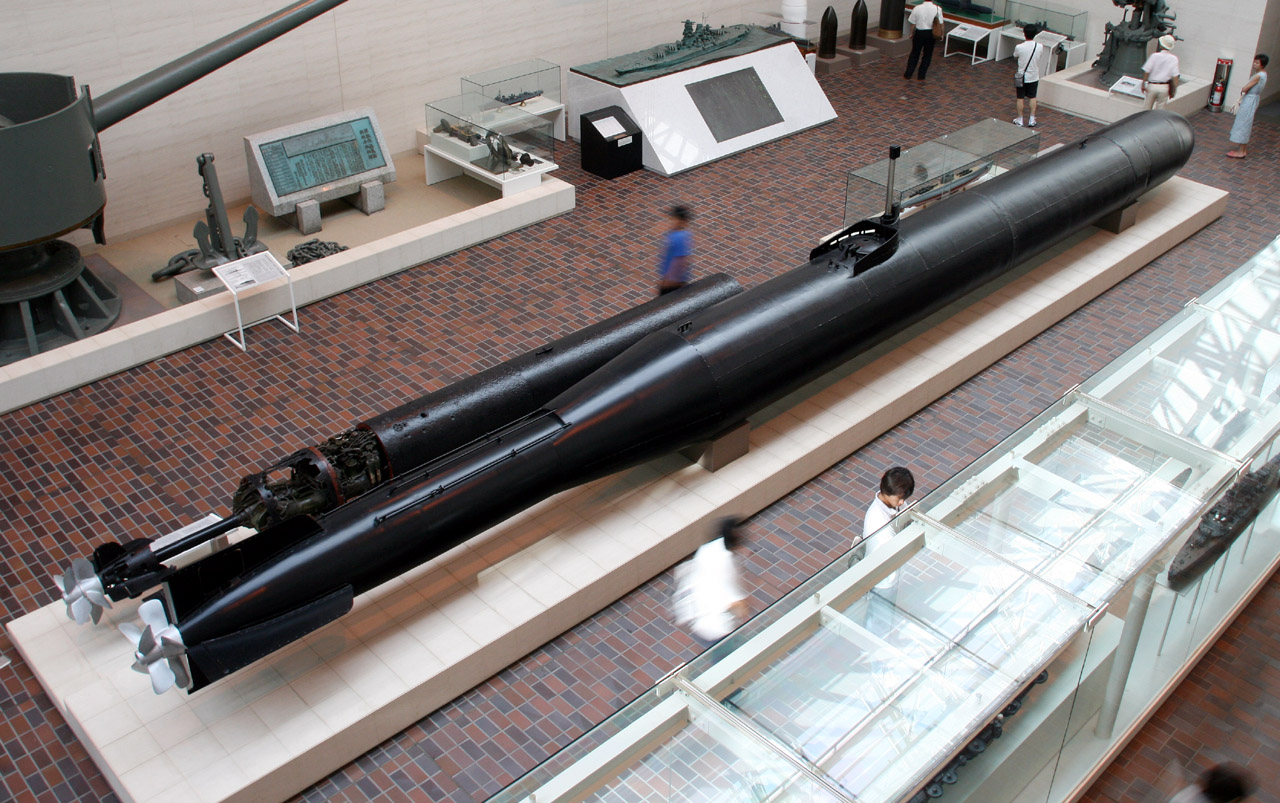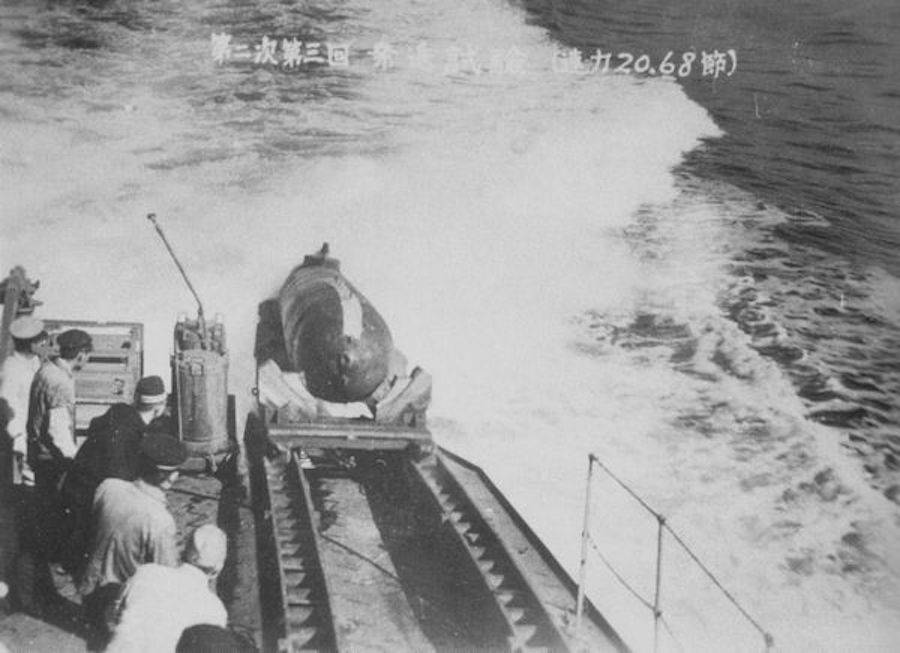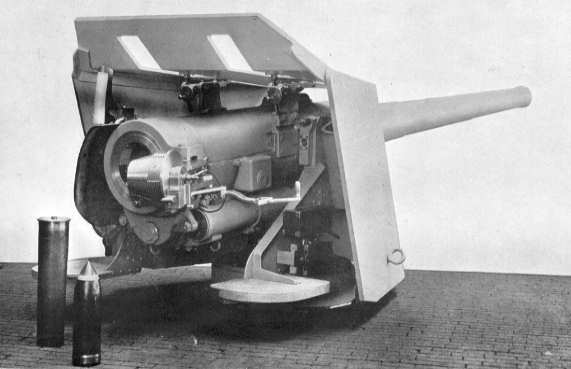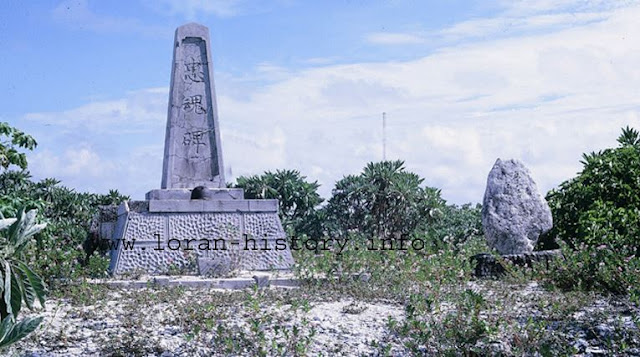Douglas Dietrich first makes this claim publicly during a guest appearance on Coast to Coast AM, May 30, 2011." The Sinking of USS Indianapolis" [1]
The Indianapolis was one of two Portland-class cruisers built during the early 1930s. It was formally commissioned in 1932. Before the war, it transported President Roosevelt on various occasions, including on a tour of South America. It was stationed with the Pacific Fleet in Pearl Harbor in the lead-up to the war.
During the attack on December 7, 1941, Indianapolis avoided damage because it was out on a training mission. The ship saw action in New Guinea, the Aleutian Islands, and the Battle of the Philippine Sea. It served along the way as the flagship for Admiral Raymond Spruance, Commander of the Fifth Fleet.
The Indianapolis was struck by a kamikaze attack during the Battle of Okinawa. The impact of the plane itself did little damage, but the pilot managed to drop a bomb that punched a hole in the ship's keel and led to several casualties. After emergency repairs, the ship went back to California for a full overhaul. While there, Indianapolis was chosen for a secret mission: to transport components of the Little Boy uranium bomb to Tinian. https://www.atomicheritage.org/history/uss-indianapolis
"Had it not been for the severe damage, the USS Indianapolis would not have been at Mare Island in July 1945. Had it not been for USS Pensacola’s engineering casualty, which prevented her from carrying the atomic bomb components to Tinian as planned, the USS Indianapolis would have still been at Mare Island when the war ended, and everyone would have survived, except those lost in the [previous] kamikaze attack.
Instead, the USS Indianapolis came out of the repair yard early and still made the fastest transit to Pearl Harbor ever recorded and then to Tinian Island, playing a pivotal role in the execution of perhaps the most momentous decision ever made by a US President". https://www.ussindianapolis.com/the-story
_off_the_Mare_Island_Naval_Shipyard_on_10_July_1945_(19-N-86911).jpg/1024px-USS_Indianapolis_(CA-35)_off_the_Mare_Island_Naval_Shipyard_on_10_July_1945_(19-N-86911).jpg) |
| USS Indianapolis 10 July 1945 Mare Island, CA. |
Dietrich claims that the Imperial Japanese Navy (IJN) Submarine I-58 attacked and sunk the USS Indianapolis using several "Kaiten," suicide submarines, which roughly translated into English is “heaven-shaker.”
 |
| Kaiten Type 1 |
Dietrich told host George Noory:
"This has been brought up in several Naval Studies and it is the subject of enormous controversy...I can tell you for a fact that it did happen"
"Because of the nature of the weapon, the US Navy did not want to bring this up at his [McVay] trial. They did not want to bring up any of the intelligence information available from Ultra at his trial. Hashimoto tried to inform the Jury at his [McVay] Court Martial that there was nothing he could have done. They misinterpreted whatever he said in Japanese into English and said he had launched conventional torpedoes."
"One reason the US Military did not want to bring up suicide torpedoes is it was considered an occult weapon. The Japanese concept of occult warfare or the "black curtain" of harnessing occult forces." - Douglas Dietrich
_on_trial_run_in_1944.jpg) |
| IJN Submarine I-58 |
 |
| I-58 in 1945 showing Kaiten fore and aft. |
I-58 use of Kaiten prior to and after sinking USS Indianapolis:
Q. What kind of torpedoes did you fire?
A. (As given by interpreter Commander Bromley) Type 95 torpedoes, propelled by oxygen.
Q. Why did you not use KAITENS?
A. (As given by interpreter Commander Bromley) KAITENS weren’t used, first, because he was delayed in determining the type of target; secondly, because it was night; and thirdly, because torpedoes were considered to be sufficient. [11]
_underway%2C_circa_in_late_1943.jpg/800px-USS_Underhill_(DE-682)_underway%2C_circa_in_late_1943.jpg) |
| USS Underhill (DE-682) |
As the Underhill rammed the surfaced vessel (later revealed to be a Kaiten) it was struck by a second Kaiten waiting in ambush. Both pilots detonated their charges, one of which led to the detonation of the destroyer's boilers, which led to her being torn in half by the explosions. The sinking resulted in the loss of almost half of her complement, including most of the officers." [7]
 |
| A Kaiten Type 1 being launched |
LtCdr Hashimoto takes up position on the Guam-Leyte route and moves westward.28 July 1945:
The Philippine Sea, 300 miles N of Palau. At0530, I-58 is forced down by a radar-equipped airplane. After 1400 Hashimoto sights a large tanker, escorted by a single destroyer. At 1431, kaiten No. 2, piloted by FPO1C Komori Kazuyuki is launched against the tanker, followed Lt(jg) Ban Shuji's No. 1, targeting the destroyer, at 1443.I-58's target is the 6,214-ton armed cargo ship WILD HUNTER (ex-EXPOUNDER), en route to Manila. At 1620 (local) WILD HUNTER's lookouts sight a periscope at 10-25N, 131-45E. Twenty-eight minutes later another periscope is spotted. The cargo ship engages the attacker with his 3-inch gun, maneuvering radically to present a smaller target. After several shots the periscope disappears.Aboard I-58, two explosions are heard at 1520 and 1530, but a rain squall prevents Hashimoto to verify the results of his attack. After surfacing his radar detects no targets in the vicinity. He later reports both ships as sunk. I-58 heads SE, to the intersection of the Leyte-Guam and Palau-Okinawa routes.That same day, INDIANAPOLIS arrives at nearby Guam. Since she is not equipped with sonar or hydrophones, McVay requests a destroyer escort. His request is denied. McVay's orders give him discretion as to whether or not to zigzag while under way. INDIANAPOLIS begins the trip from Guam to Leyte unescorted; the first major warship to do so during the war without equipment to detect enemy submarines.
Philippine Sea, 250 miles N of Palau. At sunset, the INDIANAPOLIS is zigzagging at 17 knots in overcast weather. Captain McVay orders zigzagging ceased because of poor visibility. At 2305, following a radar check, I-58 surfaces. She is heading south when her navigation officer Lt Tanaka Hirokoto (72) spots a ship approaching from the east, 90-degrees off the port beam at 11,000 yards. LtCdr Hashimoto identifies the target as an IDAHO-class battleship. The target is making 12 knots and not zigzagging.Hashimoto dives and prepares to attack with conventional torpedoes. He also alerts FPO1C Shiraki Ichiro to man No. 6 kaiten, with No. 5 (FPO1C Nakai Akira, both bow kaiten) as reserve, but he doubts the pilots can find the target in the dark with their short (2.9-m) Type 97 periscopes.When the distance is down to 4,400 yards, Hashimoto realizes that INDIANAPOLIS will pass by so close that his torpedoes will not have time to arm. He orders right rudder and begins a long circle to increase the range.At 2326 (JST), Hashimoto changes the torpedo data computer set up to a 60-degree port angle on the bow. At a range of 1,640 yards, he fires a spread of six Type 95 Model 2 torpedoes with 2-second intervals, all set to the depth of 4 meters. He observes three equally spaced hits on the starboard side. The first is forward of the No. 1 turret, the second is abreast of the same turret, followed by an explosion and bright red flame. The third is near the bridge, abreast the No. 2 turret. Hashimoto sees that his target is stopped, is listing to starboard and down by the bow. He decides another attack is necessary and dives to 100 feet to open the range, reloading his two forward torpedo tubes. [3]30 July 1945:
At 0027, INDIANAPOLIS capsizes and sinks by the bow at 12-02N, 134-48E. Thirty minutes after his last observation, Hashimoto raises his periscope, but his target is gone. After surfacing a new check reveals no further traces of his victim. I-58 departs the area at full speed, heading north while recharging its batteries. [4]At 0300, Hashimoto reports to the Sixth Fleet HQ that he sank an "IDAHO-class battleship."
As details of the INDIANAPOLIS disaster begin to become public - arguably the worst in American naval history - Fleet Admiral Ernest King, Chief of Naval Operations convinces SecNav James Forrestal that they need a scapegoat. King brushes aside Fleet Admiral Chester Nimitz's recommendation that Captain McVay be given only a letter of reprimand. Instead, he ensures that formal charges are brought against McVay.Although 700 navy ships are lost in combat in WWII, McVay is the only captain that is court-martialed. He is tried for "hazarding his ship by failing to zigzag during conditions of good visibility" and "culpable insufficiency in the performance of duty" for failure to order Abandon Ship in a timely manner.Cdr Hashimoto testifies at McVay's trail. He states that zigzagging would have made no difference. Four-time Navy Cross winner Cdr (later Vice Admiral) Glynn R. Donaho (former CO of FLYING FISH and PICUDA) also testifies that zigzagging would have been ineffective. King's court ignores both Hashimoto's and Donaho's testimonies and finds McVay guilty.After Nimitz succeeds King as Chief of Naval Operations, he presses Secretary Forrestal to remit McVay's sentence in its entirety. Forrestal agrees. This releases McVay from arrest and restores him to duty, but he is never given another command at sea.1 April 1946:
I-58 is stripped of all usable equipment and material and towed from Sasebo to an area off Goto Retto by the submarine tender USS NEREUS (AS-17). She is blown up with C-2 demolition charges at 32-37N, 129-17E. The first I-58 (now designated I-158) is scuttled during the same operation.The Fate of IJN Submarine I-58:
I have found no evidence that would substantiate Dietrich's claim that US Intelligence considered Japanese Kamikaze to be of "occult origin".
Sources:
1. Dietrich, Douglas: (audio) Coast to Coast AM, May 30, 2011." The Sinking of USS Indianapolis" https://www.youtube.com/watch?v=uJmVo2Ts8Js&list=PL04ciitCq3nDH-j4xWBMI8apSVuumm4Nk&index=2
2. https://en.wikipedia.org/wiki/USS_Indianapolis_(CA-35)
3. Warfare History Network: "World War II Fact: Japanese Sunk the Ship That Carried the Atomic Bomb", June 26, 2020. https://nationalinterest.org/blog/reboot/world-war-ii-fact-japan-sunk-ship-carried-atomic-bomb-163514
4. https://en.wikipedia.org/wiki/Japanese_submarine_I-58_(1943)
5. https://en.wikipedia.org/wiki/Mochitsura_Hashimoto
6. https://en.wikipedia.org/wiki/Kaiten
7. https://en.wikipedia.org/wiki/Kaiten#Sinking_of_USS_Underhill
8. https://military.wikia.org/wiki/Japanese_submarine_I-58
9. https://www.militaryfactory.com/ships/detail.asp?ship_id=IJN-I58
10. https://allthatsinteresting.com/kaiten
11. Testimony of Commander Mochitsura Hashimoto at Court Martial of Captain Charles B. McVay, III Thursday, 13 December 1945, Washington Navy Yard
12. Williamson, Mitch: "Kaiten Carried by Japanese Submarine I-58" (2015)
https://forlornhopesui.blogspot.com/2015/05/kaiten-carried-by-japanese-submarine-i.html
13. Jones, Stack: Hell is Highwater - "The True Story Of The WWII Cruiser The USS Indianapolis" (2018).
https://stackshortstories.wordpress.com/2018/01/01/hell-highwater/
14. Vincent, Lynn: "Terror at Sea: The Tragic Sinking of the USS Indianapolis" ( 2018)
https://www.historynet.com/deep-sinking-uss-indianapolis.htm
15. WW2 "Ultra" https://en.wikipedia.org/wiki/Ultra#Japanese
16. Hackett and Kingsepp: "IJN Submarine I-58: Tabular Record of Movement" (2017) http://www.combinedfleet.com/I-58.htm
17. Vincent L and Vladic, S.: "Indianapolis: The True Story of the Worst Sea Disaster in US Naval History" (July 2020) - https://www.youtube.com/watch?v=mM7l5PUSZ4w



.jpg%2F1280px-Type_95_Ha-Go_%25E2%2580%2593_Patriot_Museum%252C_Kubinka_(26475603059).jpg&f=1&nofb=1)

































